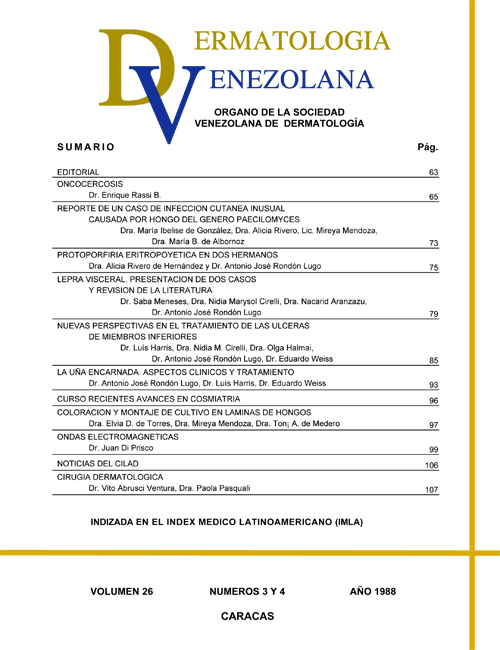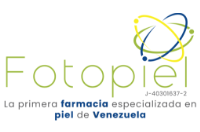REPORTE DE CASO DE INFECCION CUTANEA INUSUAL CAUSADA POR HONGO DEL GENERO PAECILOMYCES
Palabras clave:
Hongo saprofito, Paecilomices,Resumen
Se trata de un hombre moreno de 27 años, venezolano
sin antecedentes patológicos importantes, quien
presentaba 3 lesiones no infiltradas, poco pigmentadas
descamativas en cara dorsal de antebrazos y muslo
derecho, de pocos centímetros y algunos meses de
evolución tratadas sin éxito con antimicóticos tópicos.
El examen directo y el cultivo fueron positivos
identificándose el hongo como perteneciente al género
Paecilomyces especie elegans. Aunque son muy
abundantes en el medio ambiente (viven en el suelo)
contaminando frecuentemente material de laboratorio
y son resistentes a esterilización, la infección cutánea
por ellos es rara habiéndose reportado hasta 1986 sólo
3 casos en la literatura mundial, correspondiendo 2 a
P. lilacinus y 1 a P. marquandii. Se cree que la
supresión del sistema inmune mediado por células
puede ser un factor predisponente para la infección
por este tipo de hongos; aunque en 1 de los casos
reportados previamente no se demostraron alteraciones
de la inmunidad del paciente.3
En nuestro caso no fue posible hacer estos estudios
por inconstancia del paciente
SUMMARY
A 27 -year- old black Venezuelan male with no previous
history of significant pathology presented with three not
infiltrated, scarcely pigmented squamous lesions
measuring a few centimeters and with a few months of
evolution on the dorsal surface of the forearms and right
thigh. They had been unsuccessfully treated with topical
untifungals. Both the direct examination and the culture
were positive identifying the fungus as Paecilomyces
elegans. Although these fungi are very abundant in the
environment as they are resisting to sterilization usually
contaminating the laboratory equipment, a cutaneous
infection due to their effect is very uncommon.
Up to 1986, only three cases had been reported in the
literature 2 P. lilacinus and 1 P. marquandii. It is thought
that the suppression cell mediated inmune sistem may
play an inductive role in the infection of this kind of
fungus, though in one of the previously reported cases
these alterations were not demonstrated. In our case it
was impossible to make any studies of this tipe because of
inconsistency of the patient.
Descargas
Número
Sección
Licencia
Publicado por la Sociedad Venezolana de Dermatología Médica, Quirúrgica y Estética







